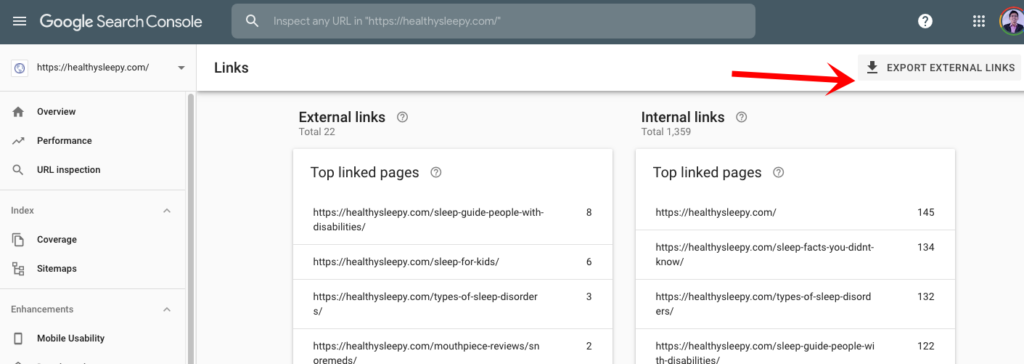by Venchito Tampon Jr | Last Updated on July 1, 2023
What is inbound and outbound links?
Inbound links, or backlinks, are links that direct to your website from other sites. Outbound links are links that point to other websites from your own site. Inbound links help increase your website’s authority and improve search engine rankings, while outbound links provide valuable resources for your audience. Building a healthy balance of both types of links is important for successful SEO.
Among the 1 billion web pages studied by Ahrefs, 90.88% don’t get any traffic from Google searches.
There are hundreds of SEO issues that keep those other 9% pages away from ranking well in Google, but Ahrefs shared two most common scenarios:
- The page doesn’t have any backlinks (inbound links).
- The page doesn’t target a topic with enough search traffic potential
Imagine if you know how to get inbound links to your site, you’ll be better off than the rest of the articles and other types of pages published daily.
So…
Table of Contents
How to Get Inbound Links To Your Website?
1. Discover ways to promote your underpromoted and underutilized content assets
You may wonder why I didn’t start with “create great content!”.
Here’s why:
If your brand has been around for a while, you may have published several content pieces that, if you take a quick look, may have just shared socially, got a few links, but never maximized to get many more inbound links.
These are your underpromoted and underutilized content assets.
Tim Soulo, CMO of Ahrefs, in his latest presentation at Pubcon, shared a recent study they conducted with backlinks of ~100k random* domains. They found that 77.6% of domains had less than 30% added links in their sample size.
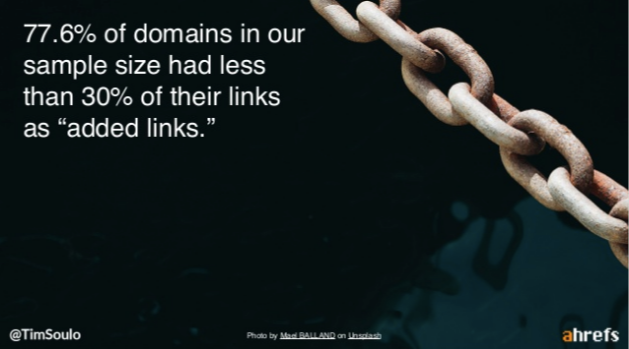
Added links were added to a referring page after more than 3 months since the page was published.
So if your content got additional backlinks after 3 months, those were considered added links.
This posed a problem for many content pieces published in every industry. Some of them don’t get much-added links after months of publishing.
How to Solve This Issue?
Identify your underpromoted & underutilized content assets. These pages have gotten a few links in the past but are evergreen and can still be promoted through manual outreach to earn more inbound links.
You can use Ahrefs for this quick execution (Ahrefs – Top Pages).
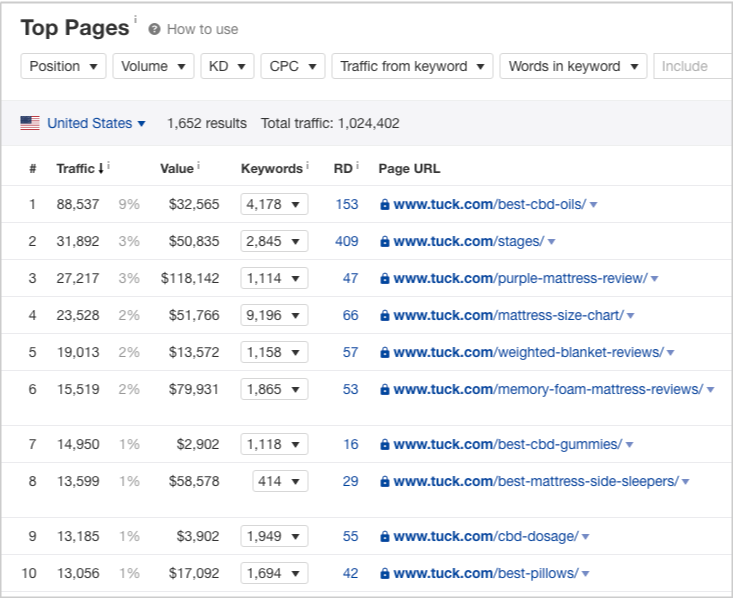
The best way to quickly get the needed pages is to export the file.
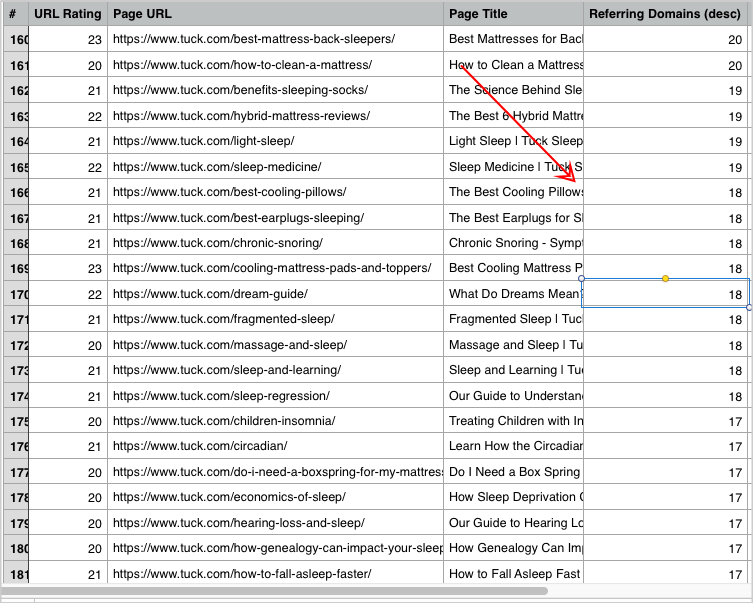
You may go further in filtering by only looking at pages that have been published for three months or so. Filter the pages by the First Seen column.
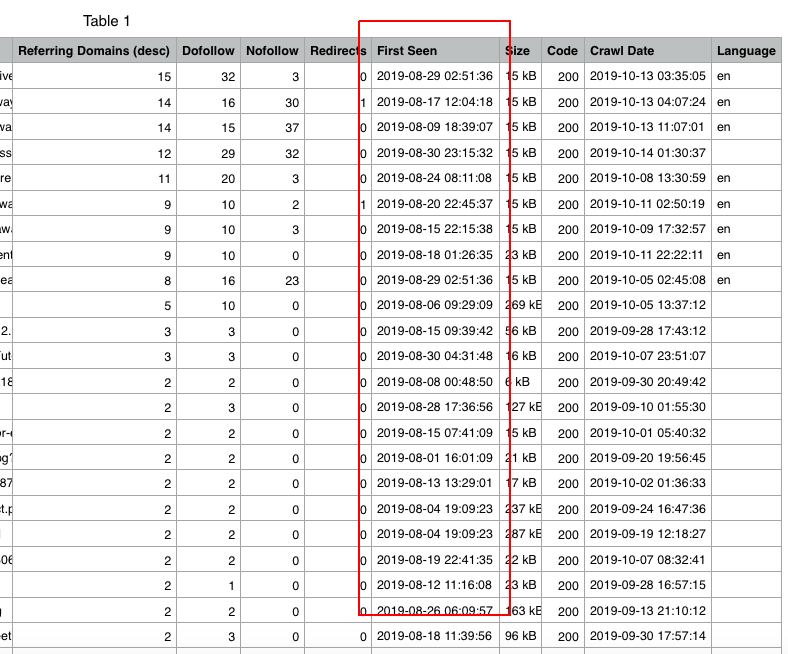
The pages that you currently have may be a mix of sales and informational content. Sort out content assets purely for information.
Once you have underutilized & underpromoted pages at hand, here are some recommendations you can take.
Check the existing links pointing to your content. Understand some patterns of the types of links. Are those links mostly resource page links? Are they referenced in other articles as guest posts? Do those links are pretty much contextual links?
DISCOVER PATTERNS IN TYPES OF LINKS
By understanding the type of linking your content asset (or your client) has gotten into, you can devise your strategy around it. For example, if you have links from resource pages, you can create another round of resource page promotion for that content piece. That’s how you get more inbound links to it.
CHECK THE EVERGREEN TEST OF CONTENT
To get more inbound links to your content piece, the page has to be updated to its current standing in information. If the content you’ve created is evergreen — can stand the test of time even after months of another set of promotions, you’ll likely get more positive responses in content promotion.
Check the content for the evergreen test. Upgrade it as much as you can with new relevant information.
OPTIMIZE FOR NEW RANKING KEYWORDS
Look for new keywords your content piece has been able to rank for. Using Ahrefs or Search Console, you can quickly check for new ranking keywords. By optimizing your content for those new topics, you increase the search visibility of your content for new opportunities.
This increases your chances of getting organic links from people who might have found your content in Google and sourced it as references to their content works.
ENSURE CRAFTING A NEW OUTREACH TEMPLATE
In many cases, link builders trying to re-promote a content piece often had much lower response and outreach placement rates than their first outreach campaigns.
Here’s why:
They haven’t taken the time to review what works and what doesn’t with their initial email template. They send the same email template to their new prospects — where some may have been part of their initial batch of possible linkers.
The key to ensuring you get the most out of your next outreach campaigns is improving your outreach templates.
You may check out these guides on email outreach tips and outreach best practices and Gmail extensions for outreach.
2. Reclaim links to your content
Some pages have mentioned your brand, name, and any content piece you have developed for months and years.
What you need to do is to reclaim links from unlinked mentions.
I’ve written a new guide about link reclamation on this link building blog. But here’s a good summary of tips you can easily apply to your campaign:
- Track the coined terms of your brand using Brand Mentions or Mentions, and reach out to those who’ve mentioned them without giving you links.
- Use reverse image search tools like Tineye to find blogs and publishers who used your visual assets. Reclaim links using manual outreach.
- Find footprints of pages where your short-form text was referenced (e.g., quotes from your company staff, statements derived from data, or short definitions of terms).
Monitor your content, whether it’s a visual, coined phrase, short-form text, or any branded content that’s worth referencing. Reach out to publishers who’ve sourced them for their own content works, and ask them to credit you with links.
3. Target local pages for inbound links
You may not be getting quick inbound links on a global or national scale, but if your audiences are in the local scene, you can think of ways to execute a local link building campaign.
I’ve covered seven hard-hitting local link building tips in one of my posts. But here are bite-sized tips to get you started with them.
- You can get inbound links from local niche job resource pages if you have job portals or pages for niche-related job positions.
- Develop localized visual data from valid statistics sources in your vertical and promote it to local publishers.
- If you’re in the local real estate niche, you can acquire resource inbound links from summer or off-campus housing city pages (simply do outreach to them).
- Serve frequently-search queries with local content (i.e. street occupancy, moving permits, local neighborhoods, helpful moving tips, things to do before you move to another city, resources for landlords & tenants, voter registration, address change, etc..).
There are many other local link building strategies, some of which are highly niche targeted. Here are some good readings for you.
Further Reading:
- Link Building For Travel Booking Companies
- Link Building For Bands and Musicians
- Link Building for Plumbers
- Creating Content That Gets Links For Personal Trainers
How to Check Inbound Links To Your Website
It is important to know who links to your site to keep track of the results of your link building campaigns.
While there are intangible outcomes you can’t quantify and monitor quickly, like brand impressions, the number of connections built throughout the entire outreach process, the number of inbound links you’ve generated in your outreach campaign gives you a quick rundown of the campaign performance.
To check inbound links to your website, you can use this finest tool, Ahrefs. It has a free version you can immediately try today.
I’d recommend their paid subscription because it unlocks their best features and provides more data about your site’s inbound links. You can check out our own tool review of Ahrefs here.
Disclaimer: I’m not an affiliate of Ahrefs.
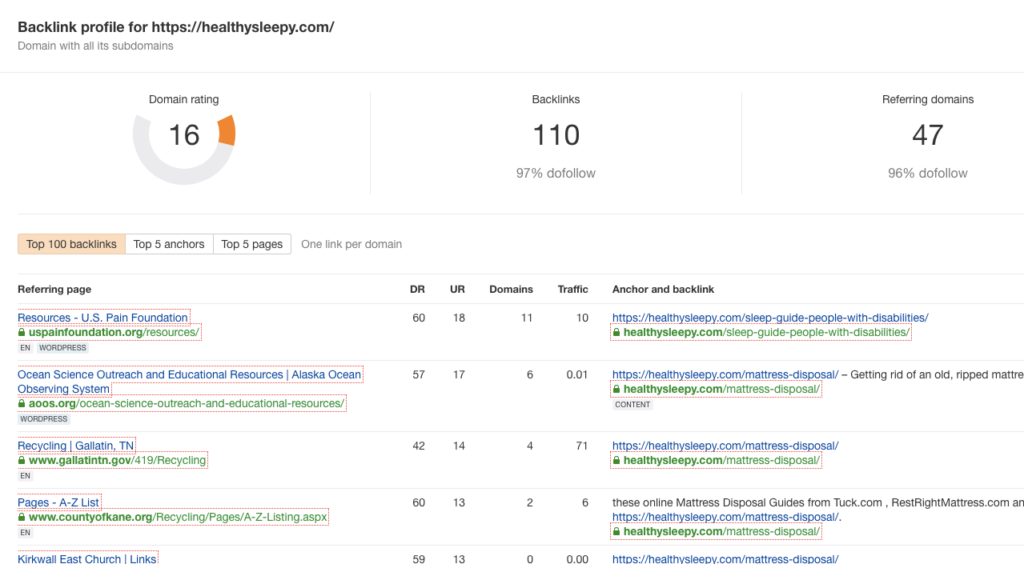
Another option is to use the Search Console. Go to Links, and there you can export external links. The list may not cover most of your links, but it will give you enough rundown of your inbound links.
Have We Been Helpful?
Want to increase your inbound links to your site — or you don’t where to start?
We are here to help you. SharpRocket is a team of link building specialists who love building high-quality links.
To learn more about how we can help, look at the link building services we offer.
Inbound Links Frequently Asked Questions
What is an example of an inbound link?
An example of an inbound link is when a reputable website like Forbes.com mentions your latest book in a blog post and provides a clickable link to your website. These backlinks from other sites increase your website’s credibility and visibility in search engines.
Is hyperlink inbound?
Yes, a hyperlink inbound refers to a link from another website pointing back to your site. In the realm of SEO, having a diverse range of high-quality inbound links is a proven strategy to increase your search engine ranking. These backlinks play a crucial role in determining the visibility and authority of your website.
How do I find inbound links?
To find inbound links, go to Search Console and select your property. Then, navigate to Links > External links > Top linked pages. By default, the report is sorted by Incoming links, revealing pages with the most backlinks. To see which pages have the most links from unique websites, sort by Linking sites.
The Author
Venchito Tampon Jr
Venchito Tampon is a Filipino Motivational Speaker, Corporate Trainer, and a Leadership Speaker in the Philippines. He is the CEO and Co-Founder of SharpRocket, a link building agency. With a decade of experience, Venchito has a proven track record of leading hundreds of successful SEO (link builidng) campaigns across competitive industries like finance, B2B, legal, and SaaS. His expert advice as a link building expert has been featured in renowned publications such as Semrush, Ahrefs, Huffington Post and Forbes. He is also an international SEO spoken and has delivered talks in SEO Zraz, Asia Pacific Affiliate Summit in Singapore, and Search Marketing Summit in Sydney, Australia. Check out his other businesses, Hills & Valleys Cafe, Blend N Sips and Saas Pursuit.
How our LINK BUILDING AGENCY builds 250 links/mo consistently using Predictable Link Building Methodology™…
- Using a SIMPLE and PROVEN system
- Using a SCALABLE strategy
- No private blog networks
- No creepy outreach emails
